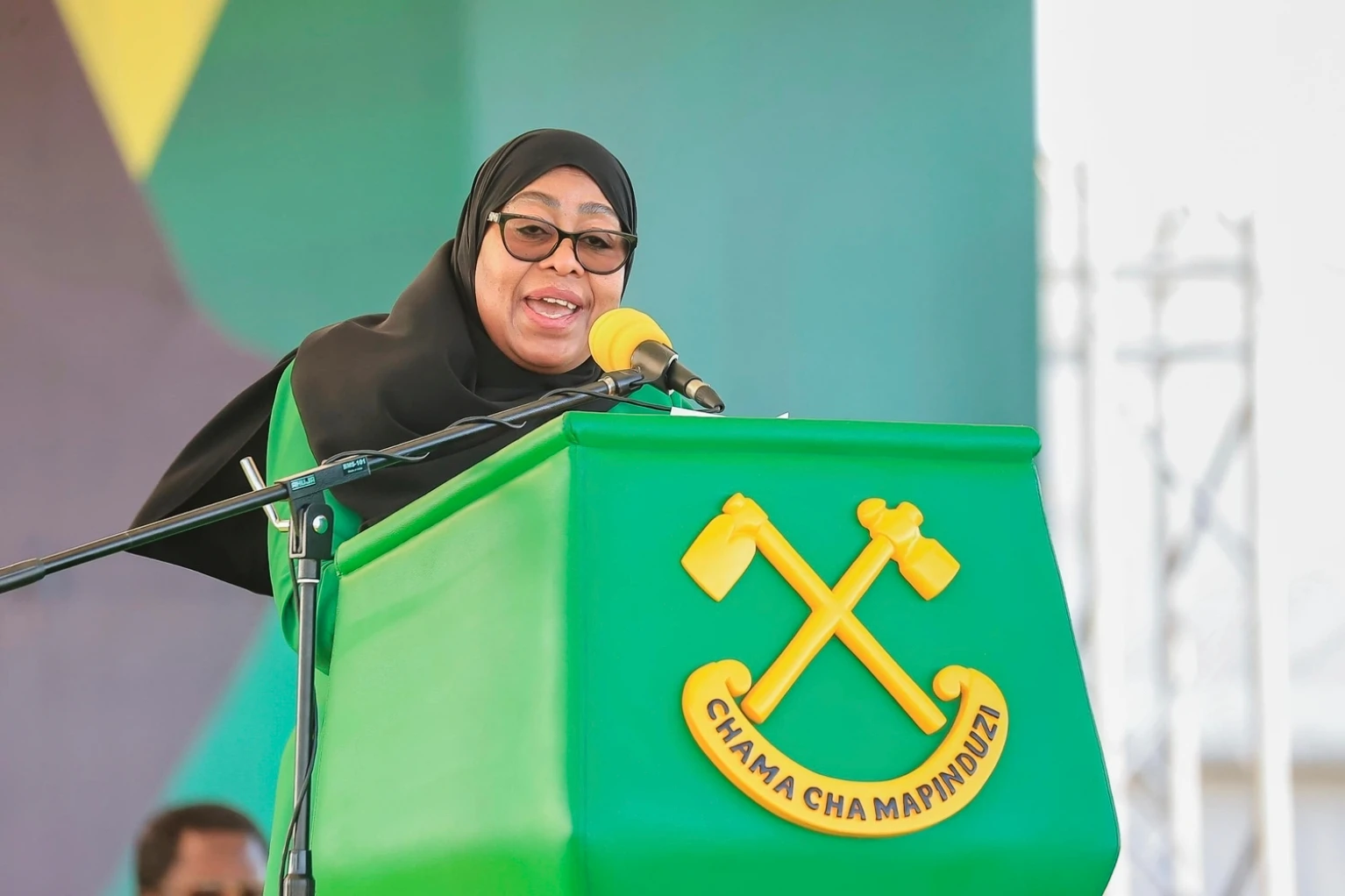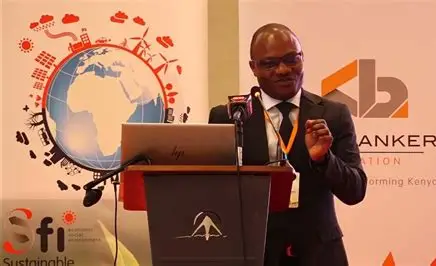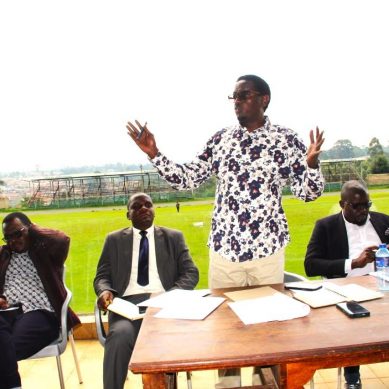
Established by the African Union (AU) Assembly of Heads of State and Government through the Maputo Declaration in 2003, the African Union Comprehensive Africa Agriculture Development Programme (CAADP) was developed to improve food security and nutrition and increase incomes in Africa’s largely agriculture-based economies.
New Partnership for African Development (NEPAD), designed the CAAPD a pan-African framework that provides a set of principles and broadly defined strategies to help countries:
· Critically review their own situations and
· Identify investment opportunities with optimal impact and returns. CAADP champions reform in the agricultural sector, setting broad targets:
· Six per cent annual growth in agricultural GDP, and
· An allocation of at least 10 per cent of public expenditures to the agricultural sector. In the CAADP, Africa as a continent has recognised that enhanced agricultural performance is key to growth and poverty reduction through its direct impact on: job creation and increasing opportunities, especially for women and youth; food security and improved nutrition and strengthening resilience.
African Union’s Extraordinary Summit in Kampala to adopt 10-Year CAADP Strategy and Action Plan to advance agricultural transformation and food systems in Africa got underway on January 9, 2025, obviously attended by of Africa’s top politicians. President Tibuhaburwa Museveni sent his Prime Minister Robinah Nabbanja to open it on his behalf.
I must begin this article by appreciating the fact that the African Union’s CAADP summit, linguistically styled “Building Resilient Agri-Food Systems in Africa” was a historic meeting. Hopefully, the decision to hold the conference in Uganda, was because the country is stil seen as the Pearl of Africa, which was also recognised as an agricultural backbone of Africa in years past.
While delivering his speech, Uganda’s Minister of Agriculture, Animal Husbandry and Fisheries Frank Tumwebaze, appealed to member-countries of the African Union to move from mere talking to action towards revamping agriculture as a key sector of African economies. This was an important appeal because critical discourse analyses of public discourses of our politicians indicate that talking frequently overshoot action in most sectors of the African economies.
I must also note that the conference was held at the beginning of 2025, when the member countries of the African Union were beginning to look at least 10 years from now with hope despite the challenge of the impacts of climate change. It was, however, perturbing that of the 52 African countries, only 44 associated themselves with the conference and actually participated in it. I must also decry the fact that the CAADP is a 10-year programme instead of a 100-year programme.
It will be remembered that long ago, in 2003, during a meeting in Maputo, Mozambique, African countries were tasked with taking agriculture seriously. The Maputo Declaration on Agriculture and Food Security is a set of decisions made by African heads of state to improve agriculture and food security in Africa the Declaration contained several important decisions regarding agriculture, but prominent among them was the “commitment to the allocation of at least 10 percent of national budgetary resources to agriculture and rural development policy implementation within five years”.
In the CAADP-host country, Uganda, agriculture has over the years reduced its commitment to agriculture both politically and budget wise, as the government emphasises industrialisation, without recognising that agriculture still remains the backborn of the country’s economy, which is also the case of many other African countries. For the fiscal year (FY) 2024/25, Uganda’s government allocated Ush1.6 trillion to the agricultural sector, which was a 52 per cent decrease from the previous year’s allocation of Ush2.2 trillion. One wonders when Uganda will ever meet the $10 target when it is moving backwards. Agriculture is a vital part of Uganda’s economy, contributing to about 25 per cent of the country’s Gross Domestic Product (GDP) and employing approximately 70 per cent of the population. The sector is also responsible for up to 50 per cent of Uganda’s exports.
The greatest challenges facing African agriculture include urbanisation, climate change and how to sustain the contributions of agriculture to development, transformation and progress of the continent, especially regarding conquest of poverty among millions of Africans whose livelihoods depend on agriculture. However, the tendency to follow the path taken by the Western world in its industrialisation journey seems to be undermining agricultural development in Uganda in particular and Africa in general.
To this end, emphasis of irrigation, and use of pesticides, herbicides, and industrial fertilisers to grow genetically modified organisms (GMO), which require clearance of large tracts of land to accommodate the GMOs, enormous financial capital and industrial fuels to run machines such as tractors, are not only straining the governments capacities to cope but also displacing human populations and forcing them to move either to cities or forests, where they cause further degradation of the land as they try to etch a living.
Therefore, many people are being squeezed out of agriculture ans made to manifest as environment pollutants in their own countries. For Uganda, which is the greatest host to African refugees, a lot of previously fertile arable land is being take up by refugees, either to graze their cattle or for settlement. Some former refugees have set up ranches in formerly productive agroecological system, thereby depressing agricultural and food production.
Besides, African countries in general and Ugandans in particular, continue to train their citizens in both agriculture and forestry as if they are training for the West where intensive agriculture by a few farmers in preferred to the extensive sociocultural agriculture practised by the rural people for century and in which social, ecological, environmental and cultural security were emphasised, and the extended family system played a critical role in food production.
It looks evident that over the next 10 years of the CAAPD, most rural people will be removed from agri-food dynamics of Africa. Many years ago, I wrote an article criticising the decision of the Uganda government at the beginning of the New Millennium to adopt globalisation as its new pathway to development in Uganda. I also criticised the decision of the African Union two years later to adopt globalisation as its pathway for development in Africa. I reasoned critically then that the choice of globalisation would open the door for foreign firms to take over African agriculture and destroy our forests, not so much to develop our agriculture as to solve the agri-food challenges within their home countries rather than Africa.
Indeed, soon Africa lost almost 72 per cent of its landmass to the foreign firms from UK, Russia USA and Australia that sought to grow seeds to fill their seedbanks to enhance their food power, and by extension, political power over the agri-food dynamics in Africa and in other poor regions of the world. Imagining that Africa still does not access 72 per cent of its landmass, it means that the Continent, under the leadership of the African Union, is strategising to build resilient agri-food systems on only 28 per cent of its landmass. It is a fact that the land taken by the foreign firms is the more fertile, productive land. The remaining land is where environmental degradation and climate change are most aggravated and issues of violence and terrorism most pronounced.
Besides, it is where African populations are now concentrated, living from hand to mouth and now facing the real threat of being rendered landless in the next 10 years. The is where we shall experience human population dispossessions and displacements and most likely death precipitated by African governments as they try to collectively implement the CAADP militarily against the rural populations. The more militant governments will almost wage war against the local populations in favour of the CAADP It will not be a surprise if it reduces to ethnic cleansing or genocide.
Lack of adequate criticality in African Union and individual countries agricultural programmes implies that the CAADP will be pursued as if it has no negative impacts on the economies and environments in the areas that foreign firms left for Africa in the early millennium when the African Union gave the go ahead to ostensibly develop African agriculture. No one is even critically asking to what extent foreign firms have developed and transformed African agriculture and how much of the food they have produce have been fed to Africans to reduce hunger and malnutrition.
Instead, the African Union has come up with its “Building Resilient Aagri-Food Systems in Africa”. It has not even come up with a critique of its earlier decision to bequeath so much African land to foreign firms to practically grow food for their countries of origin rather than for Africans.
It seems there is an intellectual deficit at the African Union and programmes are just conceived and unleashed academically and technically with little concern for the African peoples. This might suggest that the African Union has been taken over by exogenous interests bent on exploiting Africa well in the future. At least in Uganda an intellectual deficit does exist today and foreigners have taken over virtually every sector of the economy. (Oweyegha-Afunaduula, 2022). Many young people who would otherwise be active in agriculture are streaming to the Middle East to engage themselves in modern slavery.
It is absolutely important that in this century of environment, new knowledge development and advanced communications and artificial intelligence, generators of programmes for African development, enhance the value of criticality in every programme they design, and allow adequate debate of the programmes at our institutions and in public discourse.
So far, so bad. In my view there is declining hope of Africa getting ready for the 21st century in terms of development, transformation and progress, especially in agricultural development. It is as if the programmes are designed to reduce the African population through defective programmes that serve to generate genocidal conflicts and/or violence between governments and the people they govern. We need serious ideological discourse analyses of the development projects and programmes meant for Africa.
Which way Africa?
- A Tell report / By Oweyegha-Afunaduula / Environmental Historian and Conservationist Centre for Critical Thinking and Alternative Analysis (CCTAA), Seeta, Mukono, Uganda.
About the Centre for Critical Thinking and Alternative Analysis (CCTAA)
The CCTAA was innovated by Hyuha Mukwanason, Oweyegha-Afunaduula and Mahir Balunywa in 2019 to the rising decline in the capacity of graduates in Uganda and beyond to engage in critical thinking and reason coherently besides excellence in academics and academic production. The three scholars were convinced that after academic achievement the world outside the ivory tower needed graduates that can think critically and reason coherently towards making society and the environment better for human gratification. They reasoned between themselves and reached the conclusion that disciplinary education did not only narrow the thinking and reasoning of those exposed to it but restricted the opportunity to excel in critical thinking and reasoning, which are the ultimate aim of education. They were dismayed by the truism that the products of disciplinary education find it difficult to tick outside the boundaries of their disciplines; that when they provide solutions to problems that do not recognise the artificial boundaries between knowledges, their solutions become the new problems. They decided that the answer was a new and different medium of learning and innovating, which they characterised as “The Centre for Critical Thinking and Alternative Analysis” (CCTAA).
Further reading
AUDA-NEPAD AU 2003 Maputo Declaration on Agriculture and Food Security. https://www.nepad.org/caadp/publication/au-2003-maputo-declaration-agriculture-and-food-security#:~:text=The%20Declaration%20contained%20several%20important,policy%20implementation%20within%20five%20years%E2%80%9D. Visited on 9 January 2025 at 19:7 pm EAT.
Oweyegha-Afunaduula (2022). Does Intellectual Capital Matter Anymore in Uganda Ultimate News, February 28, 2022https://ultimatenews.co.ug/2022/02/op-ed-why-ugandans-are-increasingly-food-insecure-and-hungry/ Visited on 9th January 2025 at 19: 51pm EAT
Peter Sidler (2017). Overview on the CAADP, the 2003 Maputo and particularly 2014 Malabo Declarations. May 2017 https://www.shareweb.ch/site/Agriculture-and-Food-Security/news/Documents/2018_05_28_overview_caadp_malabo_declaration.pdf Visite on 9th January 2025 at 19:26pm EAT
CAADP related documents are:
- Introducing the Comprehensive Africa Agriculture Development Programme (CAADP Brochure)
- The 2003 Maputo Declaration on Agriculture and Food Security in Africa (Assembly/AU/Decl. 7(II)
- The 2014 Malabo Declaration on Accelerated Agricultural Growth and Transformation for Shared Prosperity and Improved Livelihoods (Doc. Assembly/AU/2/(XXIII)
- The CAADP Results Framework (2015-2025)
- The Country CAADP Implementation Guidelines under the Malabo Declaration
- The CAADP Programme of Work 2015-2025
- The Implementation Strategy and Road Map to Achieve the 2025 Vision on CAADP
- Guidelines for Non-State Actor Participation in CAADP Processes.








